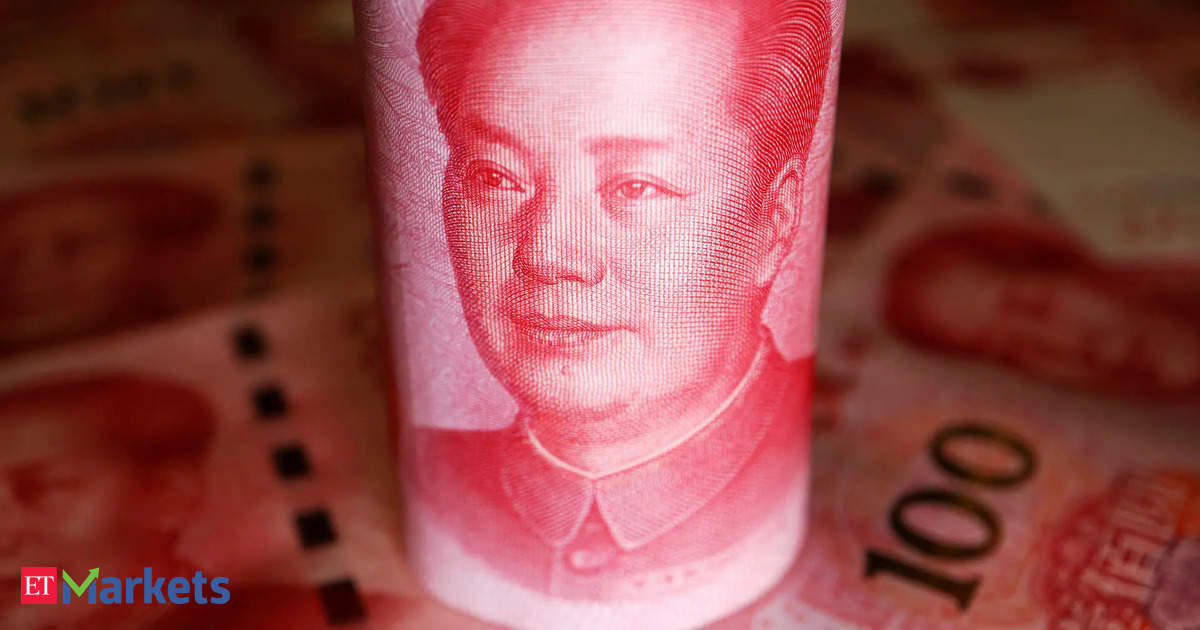As the yuan navigates these choppy waters, one must ask: What is driving this rally and how will it impact the Indian currency? rupee?
The weakening dollar is a catalyst for the yuan
The recent rise of the yuan can largely be attributed to the weakening of the US dollar. The dollar’s decline was due to several factors, including the Bank of Japan’s (BOJ) unexpected rate hike, which led to the liquidation of short positions against the yen and triggered a broader dollar sell-off.
To further aggravate this situation, recent US economic data, such as a Consumer Price Index (CPI) of 2.9% and a Producer Price Index (PPI) of 2.2%, have raised expectations of a possible 0.50 basis point rate cut by the Federal Reserve in September.
This dovish sentiment, further fueled by comments from Federal Reserve officials, sent the dollar index (DXY) back towards 101.31, giving the yuan the needed leeway to recover closer to the midpoint of its trading range.
The People’s Bank of China: a firm hand at the wheel
Behind the scenes, the People’s Bank of China has been quietly but decisively steering the course of the yuan. The PBOC’s measures, including setting a strong daily fixed exchange rate and likely tapping foreign reserves, have been instrumental in stabilising the yuan. These interventions are part of a broader strategy aimed at bolstering market confidence amid a challenging economic outlook.
In addition, the Chinese government has implemented stimulus measures targeting needy sectors and shoring up investor sentiment, further supporting the rise of the yuan.
Economic Indicators and Market SentimentThe strengthening of the yuan is also driven by improving economic indicators. Recent data showing positive GDP growth and solid industrial production have rekindled investor optimism regarding China’s economic outlook. This, coupled with an influx of foreign investment, has strengthened the yuan’s position in the global market, creating a self-reinforcing appreciation cycle.
Market sentiment and the dismantling of the carry trade
The recent appreciation of the Chinese yuan can also be attributed to a change in market sentiment, particularly in response to the elimination of carry trades. Since the beginning of this month, the yuan has already strengthened by more than 1%, reflecting traders’ growing concerns about a possible US recession. This change in sentiment has led to a move away from carry trades, in which currencies such as the yen and yuan are borrowed to invest in higher-yielding assets.
This shift could prompt exporters and speculators, who have accumulated more than $500 billion in dollar holdings since 2022, to convert those dollars back into yuan. With the market currently pricing in a 3%-4% yield gap between China and the U.S. currencies based on one-year dollar-for-yuan swaps, the rally in the Chinese currency offers the People’s Bank of China some relief, allowing it greater flexibility to manage the domestic economy.
Yuan rally: A double-edged sword for Indian rupee?
As the yuan gains ground, its moves are starting to overshadow the Indian rupee. India’s large trade deficit with China (ranging between $80-85 billion) means that any appreciation of the yuan could exacerbate the cost of imports, putting additional pressure on the rupee.
Moreover, the recent decision by the Chinese central bank to implement its biggest interest rate cut since April 2020 has pushed the USDCNY towards 7.0800, with the CNYINR approaching 11.80 levels. If the Federal Reserve goes ahead with the intended rate cuts, the USDCNY is likely to appreciate further. In such a scenario, if the RBI continues with its strategy of buying dollars to weaken the rupee, India’s trade deficit with China could deepen, compounding the challenges for the Indian economy with a widening trade deficit.
For now, the rupee looks set to trade within a narrow range of 83.70-84.05 against the dollar as the RBI carefully navigates the complex interplay between domestic economic needs and the broader global financial picture. However, as the yuan continues its upward march, the RBI may have to recalibrate its approach, adjusting its strategy to manage the exchange rate without worsening the trade deficit with China.
As for the outlook, USDCNY is expected to continue strengthening, possibly advancing towards the 7.08 level. If it breaks above 7.08, it could advance further towards the 7.02 mark. In parallel, CNYINR could rise towards 12.00, with a possible extension to the 12.20 level.
On the other hand, in the short term, the Indian rupee is likely to trade within a narrow range of 83.80-84.05, and in the medium term, it is expected to trade in a slightly wider range of 83.90-84.20. The movement of the rupee will largely depend on the actions of the Reserve Bank of India and external factors.
(The author is CEO of CR Forex Advisors)
(Disclaimer:The recommendations, suggestions, views and opinions of the experts are their own and do not represent the views of The Economic Times)
Disclaimer:
The information contained in this post is for general information purposes only. We make no representations or warranties of any kind, express or implied, about the completeness, accuracy, reliability, suitability or availability with respect to the website or the information, products, services, or related graphics contained on the post for any purpose.
We respect the intellectual property rights of content creators. If you are the owner of any material featured on our website and have concerns about its use, please contact us. We are committed to addressing any copyright issues promptly and will remove any material within 2 days of receiving a request from the rightful owner.

